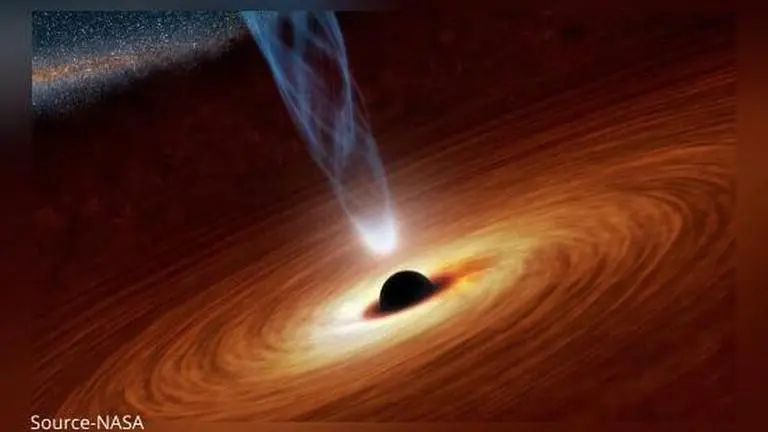Updated 6 July 2020 at 12:23 IST
Powerful telescopes can spot the 'Photon Ring' of the first imaged black hole
New and powerful telescopes can help scientists spot the 'Photon Ring' that surrounds the first ever imaged blackhole M87. Read on to know more
- Science News
- 3 min read

There is a high possibility that the faint photon rings surrounding black holes could be captured with future generations of telescopes. The first-ever image of a black hole was captured in April 2019 by the Event Horizon Telescope. It was the black hole M87, which is approximately 55 million light-years away from Earth. Researchers and viewers spotted a faint doughnut-shaped glow around the singularity.
Black Hole and its Photon Ring
It is a well-known fact that a black hole’s gravity is so intense that few light particles called Photons circle the black hole partway or sometimes once, twice or multiple times before they escape it and are picked up by telescopes. Those orbiting photons are what researchers call ‘Photon Rings’. These Photon Rings constitute a series of subrings or circles of light which appear to be getting successively thinner, hence, are harder for telescopes to pick out. Michael Johnson, who is an astrophysicist from the Harvard-Smithsonian Center for Astrophysics, stated in an interview with a space portal that the photon rings around black holes look like hall of mirrors, and telescopes pick up an infinite series of images like these.
Advertisement
Black Hole and Telescopes
The Event Horizon Telescope, also known as EHT, combines the powers of telescopes located across the world. The EHT uses a technique called very long baseline interferometry. This technique helps to operate like one, larger telescope.
Hence this telescope becomes infinitely more powerful and useful for capturing celestial objects and events alike. However, researchers need to add telescopes separated by even larger distances to optimise their usage and capture even clearer and distant images. A team of space researchers revealed in an interview given to a science portal in March 2020 that a radio telescope orbiting Earth could be capable of capturing the first subring around a black hole.
Advertisement
Source: NASA
However, witnessing the second subring would require an even more distant telescope, perhaps on the moon. The third subring could possibly be detected with a telescope even farther away from the moon, approximately 1.5 million kilometres from planet Earth. All of these plans might sound ambitious at first but a team of astrophysicists and researchers are already working to come up with telescopes that can increase the visibility of farther celestial objects and phenomenons.
Researcher Johnson stated in his interview that his team is planning to make more additions to the Event Horizon Telescope. Although the EHT won’t be able to directly photograph the photon rings or even the subrings, it might be able to detect their existence. The detection itself would reaffirm Einstein’s theory of gravity and the general theory of relativity, which predicts the of the photon rings’ existence. In addition, it will be like getting a step closer to get better measurements of the black hole’s mass and possibly also know how fast it is spinning.
The first image of blackhole:
More than 50 million light-years away from the earth is Messier 87, a giant galaxy which stands in an elliptical shape. Black Hole M87 is located at the centre of Messier 87 and is a gargantuan beast. On April 10, 2019, scientists were able to capture a faint image of M87 with the help of a planet-sized network of telescopes. M87 is a supermassive black hole and as per scientists, it contains the mass of 6.5 billion suns. The image captured by scientists was actually merely the silhouette of the Black Hole.
Source: NASA
Published By : Disha Kandpal
Published On: 6 July 2020 at 12:23 IST


